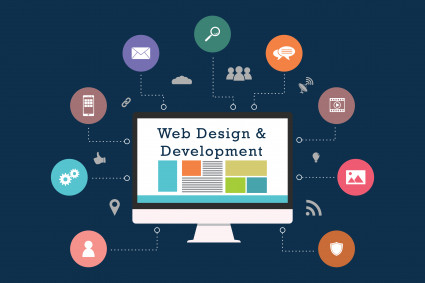
Minimalism in UX/UI design has become more than just a trend; it's a philosophy that revolves around simplicity and user-centered design. In this article, we'll delve into the understanding of minimalism in design, define its principles in the context of UX, explore its current trends, and discuss its role in digital design. Additionally, we'll provide practical best practices for incorporating minimalist design into web projects.
What is Minimalist Design in UX?
Minimalist design in UX/UI revolves around the principle of "less is more." It focuses on stripping away unnecessary elements and distractions to create a streamlined, intuitive user experience.
Key Principles of Minimalist Design:
Simplified User Interfaces: Stripping away unnecessary elements to focus on the primary purpose and content of the interface.
Clear Navigation: Emphasizing intuitive navigation paths and minimizing cognitive load for users.
Consistent Visual Language: Employing a cohesive design language with consistent typography, color palettes, and icons.
Effective Use of Whitespace: Leveraging whitespace to provide breathing room between elements and enhance readability.
Minimalist Aesthetics: opting for clean, simplistic visuals that convey information concisely.
The Minimalist UX Design Trend
Experience the rising popularity of minimalist design in the digital world. Discover how this trend prioritizes simplicity and usability for user-centric experiences. With limited screen space on mobile devices, minimalist UX/UI design ensures seamless interactions. By reducing distractions and emphasizing essential elements, this design approach enhances user engagement and satisfaction.
Minimalist UX/UI design caters to users who crave streamlined experiences, enabling them to complete tasks efficiently without unnecessary distractions. By prioritizing essential elements and intuitive navigation, minimalist design elevates user engagement and satisfaction.
The Role of Minimalism in Digital Design
Minimalism plays a pivotal role in digital design by enhancing usability, accessibility, and overall user satisfaction. Some key benefits of minimalist design include:
Improved Usability: By reducing complexity and clutter, minimalist design makes it easier for users to navigate and interact with digital interfaces.
Enhanced Accessibility: Simplified layouts and clear visual hierarchies improve accessibility for users with disabilities, ensuring inclusivity.
Faster Loading Times: Minimalist design often results in lighter web pages with faster loading times, enhancing the overall user experience.
Increased Conversions: Clear calls to action and streamlined workflows in minimalist designs can lead to higher conversion rates and user engagement.
Best Practices for Minimalist Web Design
Implementing minimalist design principles in web design requires careful consideration and attention to detail. Here are some best practices to follow:
Prioritize Content: Identify and prioritize essential content and functionalities, and design around them to ensure a focused user experience.
Embrace Whitespace: Use whitespace strategically to create a sense of balance and highlight key elements on the page.
Choose Typography Wisely: Opt for legible typography with sufficient contrast, keeping font choices simple and consistent across the interface.
Limit Color Palette: Stick to a limited color palette to maintain visual harmony and avoid overwhelming users with excessive colors.
Optimize for Mobile: Ensure responsiveness and scalability across devices, prioritizing mobile-friendly design principles for seamless user experiences on smartphones and tablets.
Conclusion: Minimalist design in UX/UI offers a compelling approach to creating user-centric digital experiences that prioritize simplicity, clarity, and usability. By embracing minimalist principles and best practices, designers can craft interfaces that resonate with users and elevate the overall quality of digital interactions.



